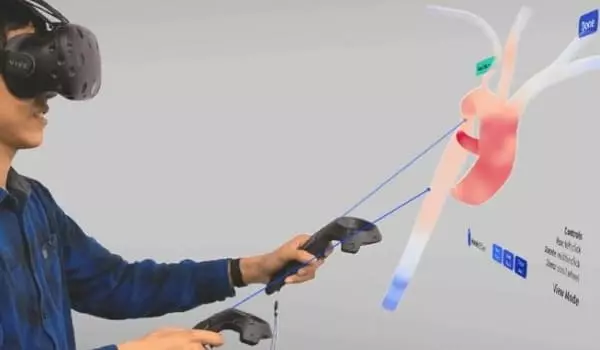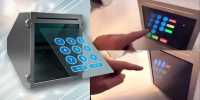Science now has the technology to measure the activity of every gene within a single cell, and a single experiment can generate data from thousands of cells. Researchers have now used 3D video gaming technology to revolutionize the way this data is analyzed.
VR has the potential to provide significant benefits as a diagnostic tool: It is capable of producing convincingly realistic simulations of experiences that may trigger symptoms, and it is capable of doing so on a consistent basis, potentially making diagnoses more objective—or at least less subjective.
Science now has the technology to measure the activity of every gene within a single cell, and a single experiment can generate data from thousands of cells. Researchers at Sweden’s Lund University have now revolutionized the way this data is analyzed by employing 3D video gaming technology. The findings were published in the journal iScience.
It takes on new meaning when you can walk around your own data and manipulate it intuitively and efficiently. I’d even go so far as to say that one thinks differently in VR because of the technique’s ability to involve your body in the analysis process.
Mattias Wallergrd
Advanced techniques in DNA and RNA sequencing have made it possible to study individual cells in tissue in greater depth than was previously possible. The main issue with these sequencing techniques is that they generate a large amount of data.
“For example, if you want to distinguish cancer cells from normal cells, you need to examine thousands of cells to get a proper understanding, which translates into enormous amounts of numerical data,” says Shamit Soneji, a computational biology researcher at Lund University.
To make this data more understandable, each cell is mathematically positioned in three-dimensional space to form a “roadmap” of the cells and how they interact with one another. These maps, however, can be difficult to navigate on a standard desktop computer.
“It takes on new meaning when you can walk around your own data and manipulate it intuitively and efficiently. I’d even go so far as to say that one thinks differently in VR because of the technique’s ability to involve your body in the analysis process “explains Mattias Wallergrd, a Lund University researcher in interaction design and virtual reality.

CellexalVR is a virtual reality environment developed by the Lund University team that allows researchers to use intuitive tools to explore all of their data in one place. The researcher can clearly see which genes are active when certain cell types form by displaying 3D maps of cells calculated from gene activity and other information captured from individual cells.
The user has a complete universe of cell populations in front of them when wearing a VR headset, and can more accurately determine how cells relate to one another. They can select cells of interest for further analysis using simple hand gestures as if they were physical objects, using two hand controllers.
Because space is not an issue, several cellular maps can be displayed in the same “room” and compared side by side, which is difficult to do on a traditional computer screen. Researchers can also meet in this VR world to analyze data together, even if they are geographically separated.
“Even if you are not familiar with computer programming, you can perform this type of analysis. A virtual world is a rapidly evolving field of study with enormous potential for scientists who need to access and process big data in a more interactive and collaborative manner “Shamit Soneji concludes.
To be sure, virtual reality is still a long way from being widely used to diagnose mental disorders. “VR has enormous potential to improve the assessment of mental health conditions,” says Daniel Freeman, a professor of clinical psychology at the University of Oxford and cofounder of Oxford VR, which is developing VR-based treatments for a variety of psychiatric conditions. More research on proposed uses of VR to diagnose mental illnesses is required, he adds. “Clinics would not use VR for diagnosis until then.”
Dr. Brian Chau, a physician who writes about cutting-edge medical technology, concurs. “The key here is data—we need validated measurements,” he says, to demonstrate that VR is comparable to or better than traditional methods. Partnerships between clinicians and VR developers must be maintained in order to move the technology “from the lab bench to the clinical bedside.”














